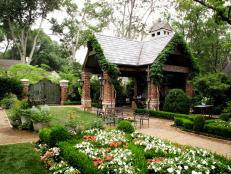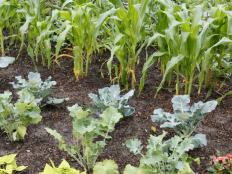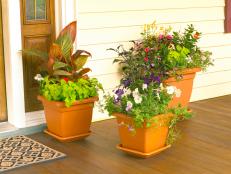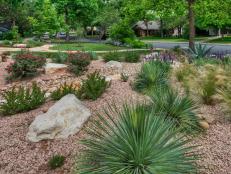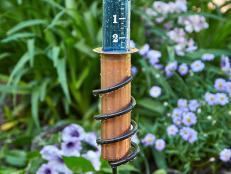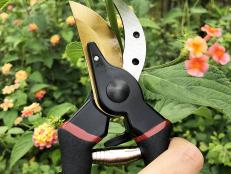Formal Garden Design
Craft a landscape that stages a formal atmosphere to reap rewards of orderly beauty.

Image courtesy of Julie Taylor Fitzgerald, American Hydrangea Society
While hydrangeas are ideal for cottage-style or woodland gardens, they also work well with the neat, geometric lines of formal beds.
Give your yard an air of elegance and refinement by incorporating principles of formal garden design. This garden style dates as far back as ancient Egypt and began to spread across Europe during the 16th Century. Formal garden design is all about order and balance. Symmetrical plantings, well-defined paths, and pruned plants all contribute to the formal ambience of a garden.
The easiest way to create a formal garden design is to rely on symmetrical plantings. Create a central line or axis that runs through your garden area, and arrange plantings on either side of that axis that are mirror images of one another. Formal gardens typically draw their main axis from the house, so relate this main path to your home in some fashion. Perhaps it will be the view from a family room, a dining area or deck.
Make the central axis a path in your garden, with other paths radiating from it. Place a sculpture, bench or water feature at the far end of the axis to draw the eye through the garden. Use this central axis of the garden as a reference point to develop all other aspects of the garden.
A formal garden design features geometric shapes—usually right angles, but curves work, too. The secret is to create well-defined and recognizable shapes. Typically these shapes outline planting areas, but they could also be part of the hardscape. For instance, the main axis could originate from a square patio, run several feet and pause on a square central hub, and then continue to end in a square pad topped with a trellised bench.
Pathways in a formal garden design must be well-defined. They can be grassy, gravel, stone or brick. If you opt for grass, you’ll need to devote time to edge paths manually in order to maintain the garden’s formality. Or you might opt to define edges with metal edging or a course of bricks or pavers.
Many modern formal garden designs rely on stone, brick or paver block paths. To conserve funds, you can always start with grass paths, graduate to gravel in time, and one day add brick or stone paths when your budget permits.
Gravel paths do require some maintenance to keep weeds in check. Hand-dig weeds, or treat them with herbicide or vinegar when they’re young. For large gravel paths, invest in a flame weeder. It works very well in spaces where combustible materials are at a minimum.
Plantings in a formal garden design also reflect a sense of order and symmetry. Actual plantings may be repeated in mirrored beds, or may be repeated in different planting areas along the central axis. Repeating colors along an axis of the garden is another way to enhance the formal feel of a garden.
Tightly clipped, orderly hedges are typical of formal gardens. Hedges can be planted in intricate patterns to form a knot garden. These hedges are often santolina, germander or boxwood. Hedges can also be knee-high and used to accentuate certain plantings. This method works well with a formal rose garden design, because the hedge can hide bare basal stems of roses. Taller hedges can create garden rooms and even a garden maze.
Formal garden designs usually include trees with specifically pruned shapes. Gardeners often use techniques such as pleaching or espalier to craft trees into a more orderly form. You can avoid some pruning chores in a formal garden design by selecting trees that offer a tidy look, such as linden (Tilia spp.), ornamental pear (Pyrus calleryana), Italian cypress (Cupressus sempervirens), Fastigiate European beech tree (Fagus sylvatica ‘Fastigiata’) or Sky Pencil holly (Ilex crenata ‘Sky Pencil’). Research newer plant offerings to find dwarf and shaped trees and shrubs.
A formal garden is also the right place to showcase topiary, whether small or large. Look for topiary forms of roses for color or evergreens for strong winter interest. Containerized fruit trees, perennials and roses shine in a formal garden design.







